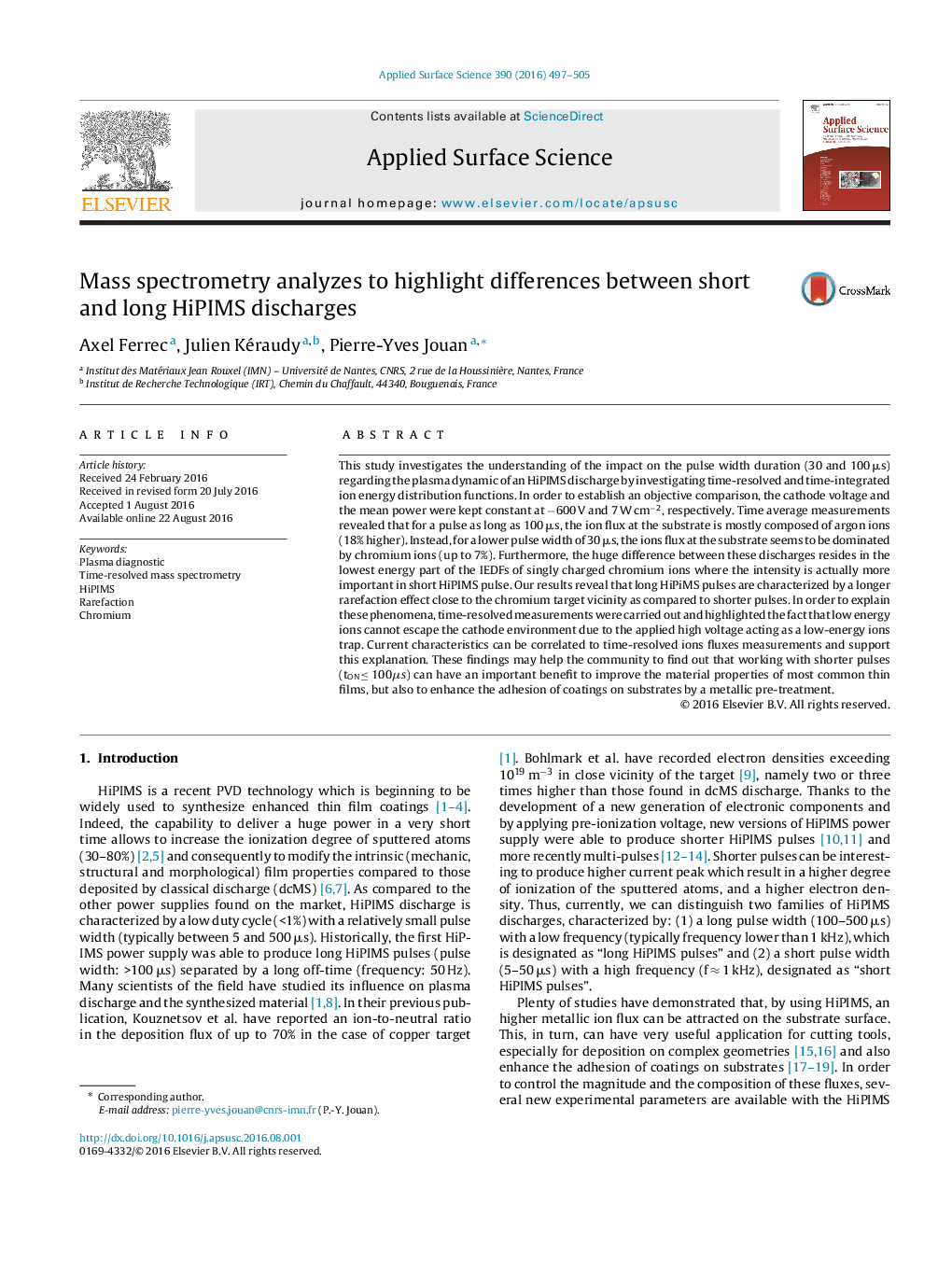| Article ID | Journal | Published Year | Pages | File Type |
|---|---|---|---|---|
| 5355375 | Applied Surface Science | 2016 | 9 Pages |
Abstract
This study investigates the understanding of the impact on the pulse width duration (30 and 100 μs) regarding the plasma dynamic of an HiPIMS discharge by investigating time-resolved and time-integrated ion energy distribution functions. In order to establish an objective comparison, the cathode voltage and the mean power were kept constant at â600 V and 7 W cmâ2, respectively. Time average measurements revealed that for a pulse as long as 100 μs, the ion flux at the substrate is mostly composed of argon ions (18% higher). Instead, for a lower pulse width of 30 μs, the ions flux at the substrate seems to be dominated by chromium ions (up to 7%). Furthermore, the huge difference between these discharges resides in the lowest energy part of the IEDFs of singly charged chromium ions where the intensity is actually more important in short HiPIMS pulse. Our results reveal that long HiPiMS pulses are characterized by a longer rarefaction effect close to the chromium target vicinity as compared to shorter pulses. In order to explain these phenomena, time-resolved measurements were carried out and highlighted the fact that low energy ions cannot escape the cathode environment due to the applied high voltage acting as a low-energy ions trap. Current characteristics can be correlated to time-resolved ions fluxes measurements and support this explanation. These findings may help the community to find out that working with shorter pulses (tONâ¤100μs) can have an important benefit to improve the material properties of most common thin films, but also to enhance the adhesion of coatings on substrates by a metallic pre-treatment.
Related Topics
Physical Sciences and Engineering
Chemistry
Physical and Theoretical Chemistry
Authors
Axel Ferrec, Julien Kéraudy, Pierre-Yves Jouan,
